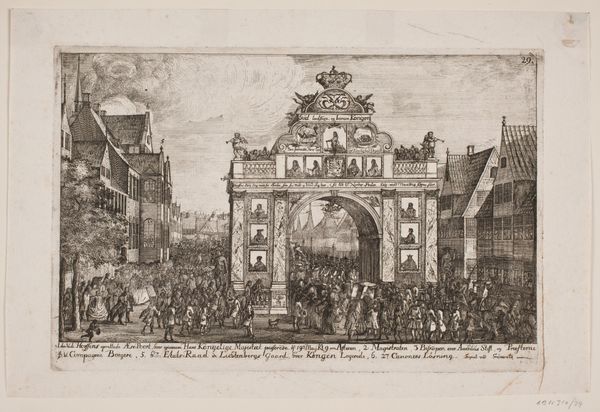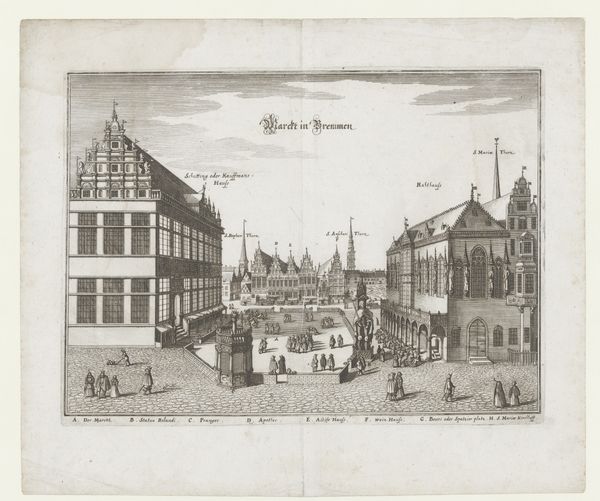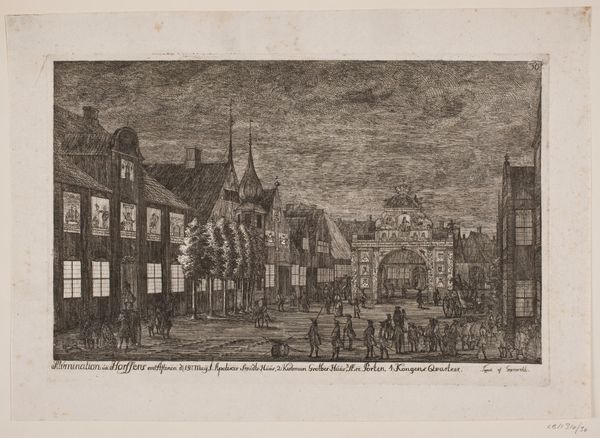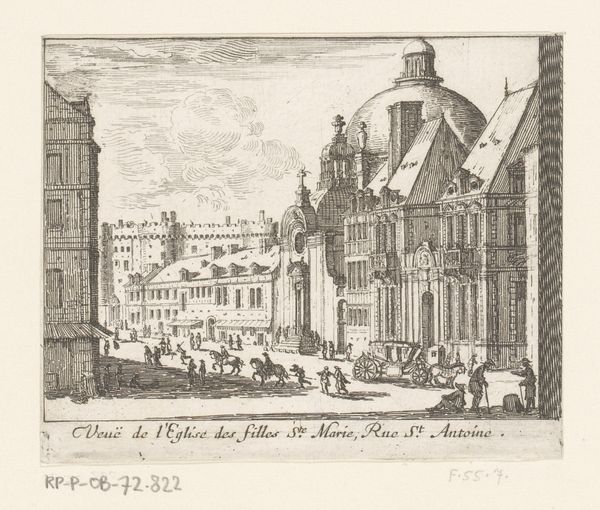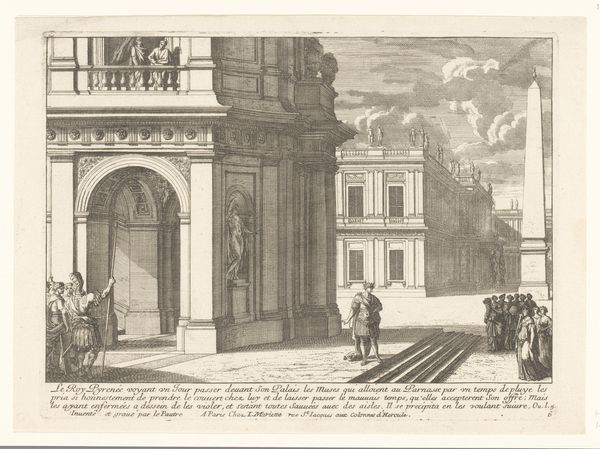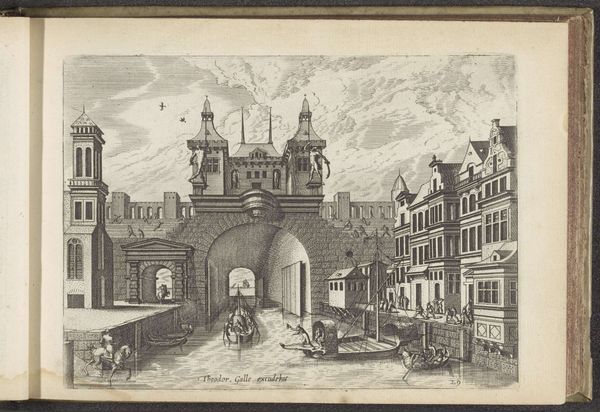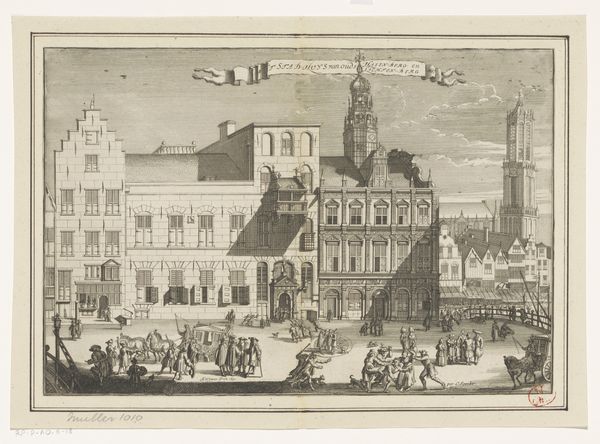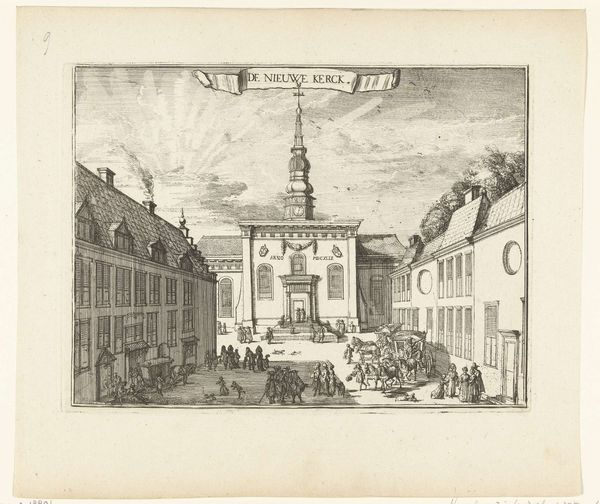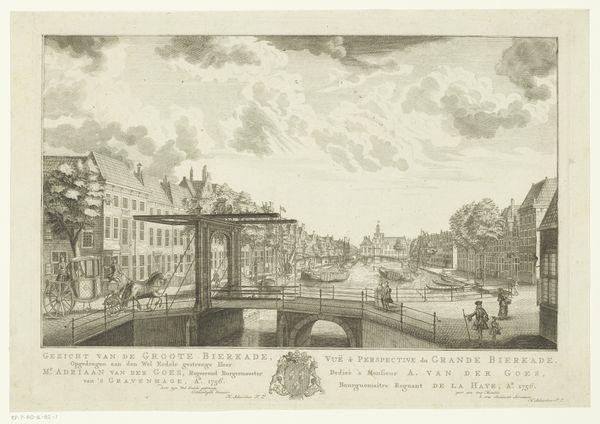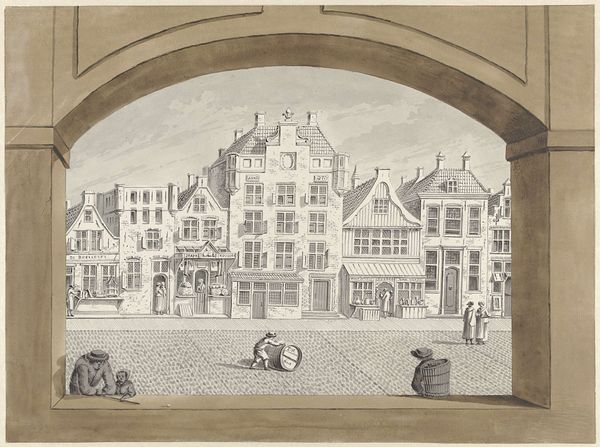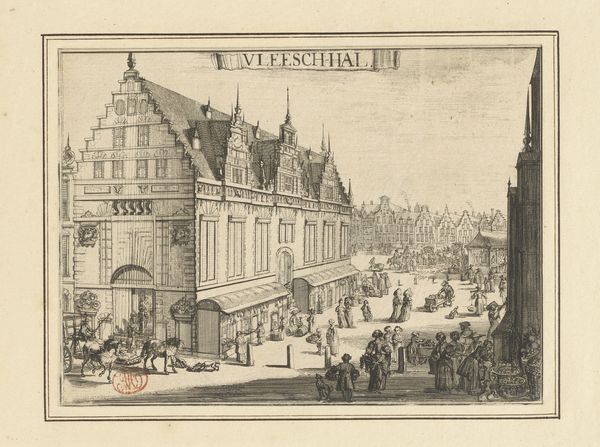
print, engraving
#
baroque
# print
#
landscape
#
cityscape
#
engraving
Dimensions: 225 mm (height) x 344 mm (width) (plademaal)
Editor: Here we have Poul Isac Grønveld’s “Frederik V’s Æresport i Randers,” an engraving from 1749, housed at the SMK. It depicts a city gate, bustling with figures. I find it interesting how it frames not just a space but also a particular moment in time. What strikes you when you look at it? Curator: The triumphal arch is more than just architectural; it’s a potent symbol of power and legitimacy. The "FS" monogram dominating the archway obviously points to Frederik, but consider the entire composition. The arch, adorned with classical motifs and a prominent crown, echoes back to earlier arches dedicated to the Roman emperors and their imperial ambition and right to rule. Editor: So it's consciously connecting Frederik V to that lineage? Curator: Precisely. The gate doesn't merely welcome a king, but invokes continuity and shared cultural identity across centuries. Consider too, how the very detailed architecture contrasts with the rougher rendering of the crowds. Why depict buildings precisely and people less so? Editor: Perhaps the buildings and monuments represent enduring power, while people embody ephemeral support that can change with time? Curator: That's insightful! By contrasting the ephemeral and the enduring, this work prompts reflections on kingship, loyalty, and memory. What symbols remain relevant? What fades from the collective conscious? This isn't just a cityscape; it’s a statement about how rulers sought to construct their image for both present and future audiences. Editor: I hadn’t considered it that way. I was so focused on the visual details that I missed the deeper message it conveys about cultural memory. Curator: Exactly, seeing historical symbols re-emerge allows us to better understand what we value in contemporary society.
Comments
No comments
Be the first to comment and join the conversation on the ultimate creative platform.
